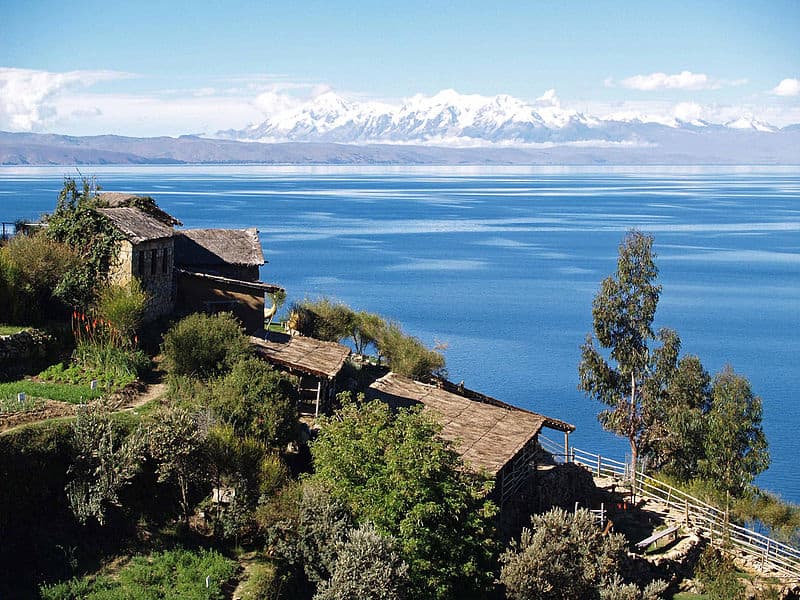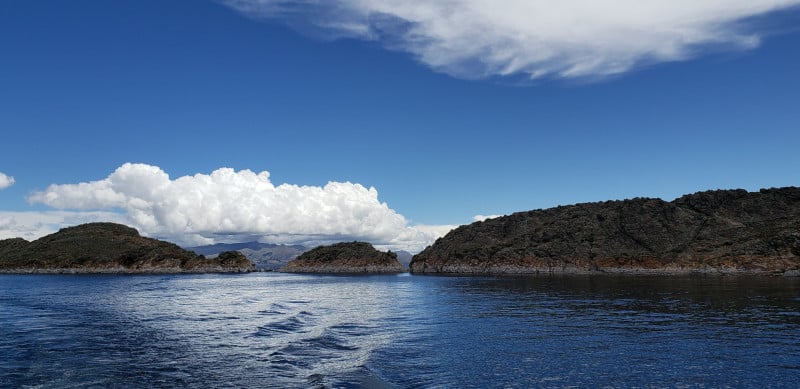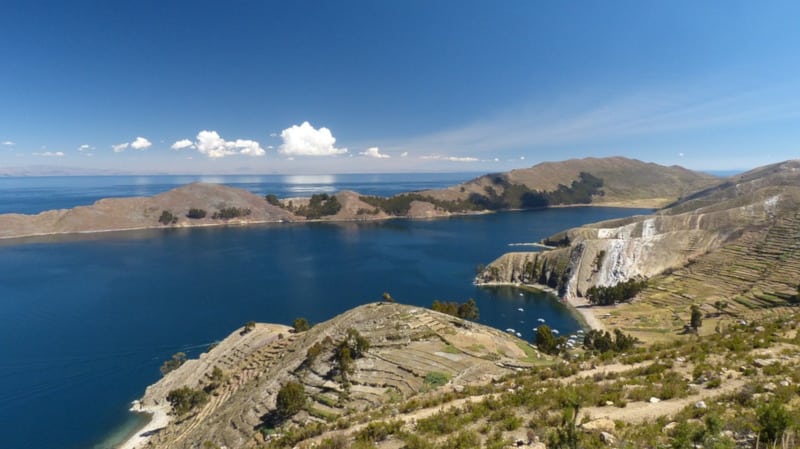Lake Titicaca Facts
- The almost poetic term of Lake Titicaca serves as the most frequently used name for this gorgeous product of natural forces. It represents the english language term for the site. It has other modern names, though, including Lago Titicaca, in Spanish.
- In the native tongue of the local Indigenous Peoples of the region, however, it originally bore another title. The ancient Quecha people long knew the body of water as Titiqaqa Qucha. Most of the modern appellations for the site derive from this.
- This marvel of geological forces stands out from similar features around the world for several reasons. Due to its location, it’s also often referred to as the highest navigable lake on the planet. This refers to its ability to contain commercial vessels.
- Its very placement qualifies the stunning Lake Titicaca as distinctive. Yet it further distances itself from other lakes in other qualifications. That’s because it additionally contains the largest volume and surface area of any lake on its continent.
- Thankfully, there’s hope for its future. This wonder of the natural world now enjoys a certain measure of protection from the depredations of mankind. The government of the region named the entire body of water a National Reserve in 1978.
Related Articles



Lake Titicaca Physical Description
The magnificent Lake Titicaca fully deserves the appreciation it receives from those who view or visit the site. Yet it does so for more than just its beauty, as many such sites do. That’s due to the fact that the water body also boasts some remarkable dimensions.
It’s actually divided into two separate subbasins. Astonishingly, the strait that connects them, named the Strait of Tiquina, only measures 2,620 ft (799 m) wide at its narrowest point. This creates a highly unique outline for the beautiful lake that must be seen.
The larger of the two sections holds an average depth of 443 ft (135 m). Impressively, its maximum depth equals 932 ft (284 m). Meanwhile, the other section is both much smaller and shallower. Its mean depth measures 30 ft (9 m), with a maximum depth of 131 ft (40 m).
At the maximum measured point, dazzling Lake Titicaca extends roughly 118 mi (190 km) in length. But its greatest width only reaches about 50 mi (80 km). Overall, this stunning formation possesses a total surface area of approximately 3,232 sq mi (8,372 sq km).
Its highly convoluted outline also provides it with a remarkably extensive shoreline. This aspect stretches out for a total of 699 mi (1,125 km) around the perimeter. Given these statistics, the lake contains a staggering water volume of 215 cu mi (896 cu km)!
Lake Titicaca Location, Formation, and Ecology
The marvelous Lake Titicaca formed in a section of the globe well known for its plethora of geological wonders. Yet the precise portion of that greater area might surprise many people. For starters, its creation placed it within the borders of the continent of South America.
More specifically, it’s found in the general western section of the landmass. It roughly straddles the borders of the countries of Peru and Bolivia. Perhaps the most amazing fact pertaining to its location is that it sits high in the stunning but rugged Andes Mountains.
The basin in which it sits, named the Tinajani Basin, formed due to the actions of regional faults sometime between 34 – 5 million years ago. The best approximation of its exact period of formation by geologists places that action at around 27 – 20 million years in the past.
The waters of the breathtaking lake itself primarily come from the steady inflow of five major rivers. More than 20 smaller streams also add to this remarkable influx. Rainfall across its large expanse adds an average of another 2.6 – 3.9 ft (0.8 – 1.2 m) to this per year.
Lake Titicaca typically possesses a very strong alpine climate. The temperature stays cool to cold throughout the year. Despite this, the lake itself serves as home to more than 530 aquatic species. Large numbers of waterbirds also call the intriguing formation home.
Many animal species also appear here, with some being found nowhere else, such as an endemic frog. Several currently unidentified species of bivalves make their home in the lake, as well. These creatures are currently being studied as possibly previously unknown species.
Features Sharing Its Range



Check out our other articles on Earth’s Geothermal Marvels, Puffin, Chinchilla, Ebor Falls, Happy Alien, Coral Pink Sand Dune Beetle, Olive Ridley Sea Turtle, Wood Frog












Leave a Reply